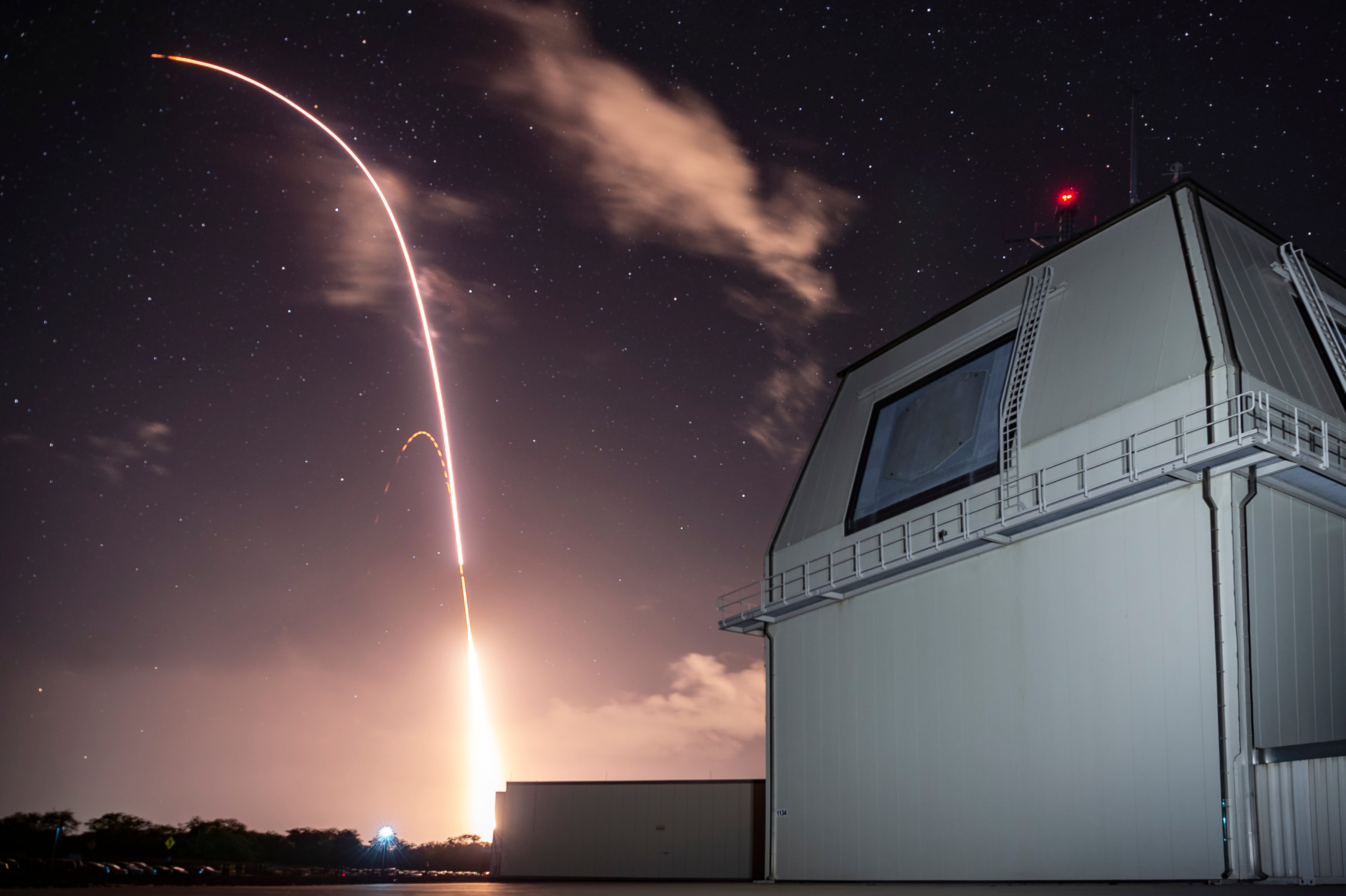WASHINGTON — Lockheed Martin said it will compete to build the Missile Defense Agency’s Next-Generation Interceptor designed to protect the homeland against intercontinental ballistic missile threats from North Korea and Iran.
The company is “excited to confirm that we are putting in a bid for the Next-Generation Interceptor,” Sarah Reeves, Lockheed’s vice president of missile defense programs, told reporters Aug. 3.
Bids were due July 31.
Boeing and a Raytheon-Northrop Grumman team have already announced their intentions to compete to develop and field the agency’s new interceptor following the cancellation of the Redesigned Kill Vehicle meant to replace the warhead on the current Ground-Based Interceptors. Those missiles are part of the Ground-based Midcourse Defense System, which is operational at Fort Greely, Alaska, and Vandenberg Air Force Base, California.
The RKV program was paused in May 2019 and then abruptly terminated in August 2019 due to insurmountable technical issues resulting in delayed schedules and cost increases. The Defense Department announced at the time that it would embark on an entirely new program to field a future interceptor.
MDA now plans to downselect to two companies, which will then compete for the right to build the interceptor.
RELATED

While MDA struggled with RKV, Lockheed invested the last two decades on multi-kill vehicle technology,” Reeves said.
Lockheed had one of three small contracts to design a kill vehicle that could take out multiple warheads several years ago that would lead to a program that would replace the RKV called the Multi-Object Kill Vehicle (MOKV) program. Raytheon and Boeing had won the remaining two contracts.
Reeves stressed the need for the new interceptor to be able to go after threats that disperse multiple objects including decoys.
“We are looking carefully at the lessons learned from RKV including parts survivability testing which, in that program, was done too late and caused a major system redesign, as well as ensuring early-and-often testing and fly-before-you-buy mentality,” Reeves said.
Lockheed plans to conduct two successful flight tests before going into production, Reeves said, which as an MDA program requirement.
“The time is right now,” Reeves said. “We have significant investments and the technology a couple of decades ago, when this was initially a vision of MDA, wasn’t quite there, but now it is ready to go.”
The company plans to take elements from its existing capabilities such as the Terminal High Altitude Area Defense (THAAD) system, which Reeves said has had a 100 percent mission success rate, and the Aegis missile defense system. Lockheed also will garner experience from its partnership with the U.S. Navy on its Trident II submarine-launched ballistic missile system, which “has to survive these more hostile environments,” she said.
And Lockheed’s experience with space is another asset that will contribute to understanding technology needed for an NGI, which will need to travel through space, according to Reeves.
Lockheed is also optimistic, Reeves said, that it can meet a faster schedule for NGI than currently planned.
Some Defense Department officials said NGI could not be fielded until the 2030s but the MDA director and U.S. Northern Command’s commander believe it is possible to move that timeline to at least 2028 or earlier.
The company plans to use tools such as artificial intelligence, machine-to-machine learning, big data analytics and 3-D printing to “accelerate the schedule and to deliver products faster than we have had in the past,” Reeves said.
Jen Judson is an award-winning journalist covering land warfare for Defense News. She has also worked for Politico and Inside Defense. She holds a Master of Science degree in journalism from Boston University and a Bachelor of Arts degree from Kenyon College.








